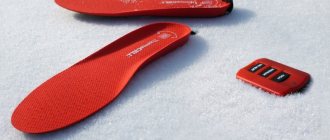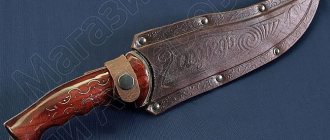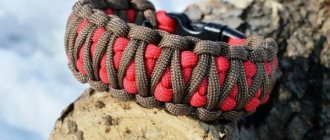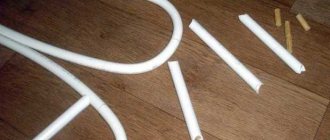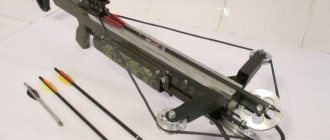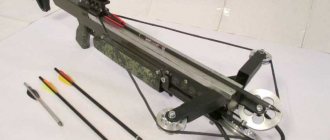PART 1
First, a little history.
The problem of effective long-range shooting against a small target has always been present. A situation familiar to everyone - a duck sits on open water, sees a person from afar and does not fly away. But as soon as you try to get closer to the shot, it’s gone. It turns out something like in the fable of the famous but nameless fox with green grapes: “... She went and said with annoyance: “Well! He looks good..."
There is no point in shooting at such a distant duck, you simply can’t hit a duck with a bullet, and even if you hit it, you’ll get a piece of meat mixed with feathers and intestines; if you shoot with a shot, it won’t hit because of the large spread, and there’s no lethality anymore. I read somewhere an ancient joke: even before the First World War, a certain southern Russian landowner sent an order to the German weapons town of Suhl: I ask you to make me a gun so that it can hit a hundred fathoms. They answered him: Dear Herr, we, of course, will make you such a gun with great pleasure, but first you must invent it...
However, if you think about it, the solution to this issue is most likely “buried” not in the gun, but in the cartridge. To solve the problem of hitting a small target at a long distance, the military came up with shrapnel. The same shrapnel for which the Russian three-inch gun was called the “death scythe”: the projectile is a glass (actually a short piece of a barrel), at the bottom of which an expelling charge was placed, and buckshot was poured on top. After the shot, the glass assembly flies along a trajectory. On approaching the target, the expelling charge in the glass ignites and throws a sheaf of buckshot forward, practically firing a shot from a short distance. The response time of the charge in the cup was set by the artilleryman before firing the cannon by adjusting the remote tube. The tube had several plates (as in a children's pyramid) with ring grooves filled with gunpowder. By rotating the plates, the length of the common groove was set; while the gunpowder was burning, the projectile flew a certain distance. Knowing the firing distance, and therefore the flight time of the projectile, the gunner, at the command of the commander, rotated the tube rings to the desired position before firing. Yeah, like in that movie: “The tube is fifteen, the sight is one hundred and twenty. Battery, fire!
Later, according to some sources, Griner did something similar, but for a shotgun, and even later Markevich: a shell of two copper hemispheres filled with shot was loaded into the cartridge. The hemispheres were fastened with a nail-like rod with a wide head. When fired, this cap was slowed down by the air and the rod was pulled out, after which the projectile opened and the shot flew, dispersing freely. The length of the rod determined the opening time of the projectile. (V.Kh. Long-range projectile “shrapnel”, “Hunting Library”, No. 11 for 1996, drawings from there.)
The idea was not widespread, perhaps due to its low or varying effectiveness from shot to shot. Good stability of operation requires high-quality materials and precise processing, which is very expensive and difficult for a craftsman. Stability of actuation would be a problem even for modern high-volume production. Deformation of elements from overloads during firing, leading to disruption of the shape, instability of the aerodynamics of the container in flight, leading to tumbling, variation in the point of impact and response time - these are the reasons, and as a result, at best, one cartridge out of five will work as expected. As a result, money is wasted and no pleasure.
SKM "long range" cartridge.
The SKM “long-range” cartridge for shooting at 60-90 meters, which appeared on sale a couple of years ago, somehow passed me by and came into my hands only now. One thing can be said right away - the idea of increasing range is attracting some attention from cartridge manufacturers, which is good news. Such progress as described in Sam Johnston’s story “Electronic Hunter” (read on Samizdat in translation by Trionix, for which many thanks to him) is still far away: “I work at the Maitre Corporation, and my friends and I argued whether I could put it in a cartridge hunting rifle, a fragmentation shell with shot and an OUT receiver, and attach a radar range finder and a ballistic computer to the gun, which tells you where to point the gun and when to pull the trigger, while simultaneously programming the burst range of the projectile.” But “the process is underway.”
I disassembled a couple of cartridges - the design is very basic. Simply, the shot container is placed upside down, that is, bottom up, and in it, in the inverted bottom, a large empty recess is formed. Due to the recess, the bulk of the shot in the container is shifted to the end opposite to the recess. A container, one half of which is heavier than the other, must inevitably turn over in flight, the shot will fly out of the container and it will lag behind, and the shot will fly forward. But the whole point is in this nuance - part of the distance (before the revolution) the shot flies in a container, the total air resistance of which is less than that of a scattered sheaf of shot, so the shot will retain a certain reserve of speed and accuracy, making it possible to hit a target at a longer distance compared to with a regular cartridge.
The simplicity of the design allows the cartridge to be loaded on an automatic line without increasing the cost and, accordingly, the retail price. The shot, of course, is not ideal, not quite round and not very hard; the shell contained a couple of pellets of a bad shape. Weight of shot No. 3 in a cartridge of 35.15 and 34.95 g (148 and 146 pieces), a container of 2.54 and 2.35 g, a pole of 1.71 g, a seal tray for gunpowder. The gunpowder looks very familiar, although the word “import” is written on the box instead of a brand.
Preliminarily, we can assume that the very principle of turning the container over on the flight path introduces a certain element of instability, but we will judge based on real results. Let's see how the cartridges perform after the shooting, which I plan to do with the opening of the hunt, in a month.
April 2021
High-quality long-range hunting cartridges
Long-range hunting cartridges shoot far. Complex concentrators include Jones shrapnel. The shrapnel consists of a wad, a wire rod is inserted into its center, and a shrapnel is put on it, which consists of 2 copper hemispheres, fitted to each other with ears, a rod passes through them, and thus they are held together. The shot is poured into the hemispheres, and the device is placed in the sleeve. After leaving the barrel, the wad slows down and pulls the rod out of the shrapnel ears. It comes out of the ears, the hemispheres open, which release the fraction. We will learn about high-quality long-range hunting cartridges from this article.
Manufacturers, when they see the demand for long-range hunting cartridges, no, and they will say that they have already developed the same high-quality long-range cartridges. For example, the Double Impact cartridge develops a pressure of 1050 bar, shot weight 56 g, caliber 12/70. This is a cartridge with 2 shot concentrator wads that face each other. But the results are as follows: the shot may fly 60 meters in a bunch, or there will not be a single shot on the target, but due to the fact that there was a limited number of cartridges, only 10 pieces, I never fully figured out their capabilities.
Recently, SKM Industry LLC released 2 types of long-range cartridges: 1. Hunting shotgun, in 1936, 12/70 with shot loads number 3 and 0, long range 60-90 meters. 2. Hunting shotgun, in 1935, 12/70 with shot loads number 3 and 0, ultra-long distance 100-110 meters.
The first cartridge is loaded as follows: a sample of gunpowder is poured into an encapsulated cartridge case, then a polyethylene wad is added, an inverted uncut polyethylene cup with shot is placed on it and rolled. The bottom of the cup is pressed inward by 8 mm, and it flies towards the target with this emptiness. The ultra-long range cartridge is slightly rounded at the front. Its operating principle is similar to the Double Impact cartridge. When I went on a spring hunt, I purchased 2 packs of 10 rounds each with a zero for shooting at 60-90 m.
I am sitting in a hut that I built on the shore of the bay. There is a decoy 15 meters from me. In my Benelli gun, a cartridge with a 5-point shot will be used for a drake, and in the store there are 3 cartridges for geese with 0 shot for a “long distance”. Behind the back there are stuffed white carps. The duck gives a “croak” and a drake splashes down about 7 meters from it. I shoot, and the drake drags its broken wing and swims away from the shore. By the time I manage to catch him with a fly, he swims 40 meters away. Only with the second shot at “Long Distance” I finish off the wounded animal. I feel a tangible return. I don’t like the shot scree across the water; it reached the drake only with the head part.
After the hunt I decided to try out hunting cartridges. Shooting at a goose profile from a Benelli gun with a cylinder attachment at a distance of 65 meters, three shots did not deliver a single pellet. I reduced the distance to 60 meters, set the profile of the goose on a snowdrift, and again there was not a single pellet in the profile. Most of the pellets, simply not reaching the profile, skittered across the snow. I had with me SKM Industry cartridges with a weight of 32 g and “00” shot. To my surprise, 1-2 pellets consistently hit the profile of 3 shots. I can’t yet say with confidence about the combat capabilities of the new cartridges. Maybe I did something wrong, it would have been nice to shoot them more, but I only had 18 rounds.
The manufacturer advises shooting such cartridges from guns that have barrels without choke constrictions that are not afraid of increased pressure. The only thing that worries me is the possible decrease in the flight path of a container with shot, due to gravity and air resistance, especially at a distance of 100-110 meters. The picture is the same as when shooting a bullet. Then the hunter will have to shoot at a running hare or at a flying bird, taking into account the reduction in shot. Such cartridges will be a new thing for hunters. And in order to use them, you need to have a good understanding of the ballistics of these containers with shot. But ballistics is an exact science, and it is impossible to circumvent its laws.
In Novosibirsk they offered high-quality 12/70 and 12/76 Iskra-M cartridges, which are assembled in polyethylene sleeves, and “Extra-M” are assembled in folder cases. In such cartridges the charge is divided into 2 parts. For 2 grams of Sokol gunpowder, install a cardboard spacer, in the center of which there is a hole with a diameter of 1.8 mm, then add another 1 gram of gunpowder, and then everything is done as usual. Over time, the burning of the gunpowder will be extended, and, consequently, the maximum pressure will be less than if the entire powder charge were ignited at once. It was assumed that the speed of such a projectile would increase, and along with the speed, the range of destruction of game would increase. These cartridges are close to each other in their combat characteristics.
I would like to receive complete information from domestic manufacturers on these interesting developments, first of all, we are talking about accuracy and sharpness at recommended distances. The information published in publications for hunters is clearly not enough. The same problem occurs with zero ammo.
I have good impressions from 12/70 cartridges with Tandem bullets, 12/70 cartridges with Poleva-3 bullets, which were assembled by SKM Industry LLC. At distances of up to 80 meters, wild boars and elk were reliably hit.
Most hunters know that the path to successful shooting depends on the gun-cartridge combination. Many people run to the shops before hunting, grab the cartridges that are left on the shelves, and then are surprised that the gun has begun to fire weakly. You need to remember that a conscientious hunter will not shoot with buckshot and shot further than 70 steps. Without knowing the exact values at different distances of the container's speed from the muzzle, it is impossible to accurately calculate the decrease in trajectory at a distance of about 100 meters, but we can assume that at this distance the “sag” will be at least half a meter.
Now we know what long-range, high-quality hunting cartridges are.
PART 2
So, tests. Our spring hunt was never opened; it was postponed until the fall.
First things first, determining the muzzle velocity of different cartridges. The cartridges are not new; they spent a winter, or even more, in an unheated warehouse. The numbers, in general, are not particularly indicative and are interesting purely theoretically, from the point of view of cartridge preservation. But they exist, and we have to start somewhere.
Chronograph Chroni Alpha. The gun is an Italian semi-automatic “Ares”, caliber 12/76, barrel 76 cm with a payload.
| Cartridge | The consignment | Speed V1, m/s |
| SCM Long distances (60-90 meters) | 4-od-130/10.18 | 381.7 392.0 383.6 |
| Fetter Semi-Magnum No. 1 -36g | PM-16/18 Aug 2018 | 393.0 396.2 395.0 |
| Taiga Bior No. 3 -32g | party ODT-06/17 Aug 2017 | 383.4 382.8 391.3 |
| Taiga Bior No. 5 -32g | party CCT-12/17 September 2017 | 376.3 381.6 380.8 |
| Vetter Sporting No. 7.5 -28g | — | 403.0 415.4 415.6 |
| SKM No. 7 -32g | batch 30D-72, 04.13. | 426.3 419.9 413.4 |
Next - shooting at paper targets, vertical sheets measuring 120x105cm. Caliber 12/70, barrel length 52 cm, cylinder, open sight - pistol type front and rear sight, 2 shots at one target. It should be especially noted that, according to the instructions on the packaging, the SKM cartridge is recommended for a barrel without a choke (cylinder). Actually, it’s all the more interesting - a short barrel with a cylinder is very convenient for hunting, gives excellent results at short range, and it is precisely for this that the problem of a long-range cartridge is most acute.
- For comparison - a distance of 20 m, Fetter cartridges, shot No. 3 in a container, 32g. 2 shots. Split grains in a circle diameter 75 cm - 177 pcs.
Deviation of the Average Point of Impact from the Aiming Point (STP from TP) is to the right of 15 mm, above 40 mm - that is, in the black circle. In 32g of shot No. 3 there are 120-123 grains. So the accuracy (the number of pellets in a circle f75 cm with the center in the STP, i.e. in the center of the scree, the circle with the most affected part of the target) K = 177: 2 (= 88) : 120 = 73%.
In the central circle f 23 cm - 29 pieces (: 2: 120 = 12%. ). Conclusion - very accurate and the accuracy for the cylinder and distance is not bad.
- Distance 35 m. 2 shots, SKM “long range” cartridge, shot No. 3, 36g. Deviation of STP from TP: above 224, to the left 80 mm. A total of 172 dr (:2:147 = 58.5%) per circle f75cm, a total of 237 dr (almost 100%) per target sheet, and 33 dr to the central scree circle f23cm. (:2:147=11.2%). Conclusion - the accuracy is very good, but the scree lay much higher and to the left.
- Distance 70 m. SKM cartridge “long range”, shot No. 3, 2 shots. The deviation of the STP from the TP is above 250 and to the right of 257 mm, the center of the visually outlined zone of greatest accuracy from the TP is above 297 and to the right of 220 mm. Accuracy in a circle f75 cm K - 136 dr: 2: 147 = 46%. In the Central circle F23cm - 0 pellets, in the circle F23cm the most affected - 38 pellets, i.e. :2:147 pcs = 13%.
Conclusion: accuracy is good, especially for 70 m, but much higher and to the right. If I aimed exactly at a sitting duck, 0 pellets would hit it - i.e. pure miss.
4. General conclusion - the cartridge always hits much higher (which is not at all surprising - the air resistance of the “bullet” and the scree is strikingly different), right-left differently, not stable (I shot it handheld, you still need to check and aim). The accuracy of the cylinder at such distances is very good and there is at least some probability of hitting the target. If we consider that an ordinary average shooter from an ordinary 73-76 cm barrel with a choke hits a taking off duck at 35 m - say 8 times out of 10, at 50 m - 6 times out of 10 (this is already a bit far and even with a good hit with a five, it’s not always the duck falls), then at 70m - even if we assume that the gun and cartridge will give the same accuracy at this distance of 60-70% in a circle f75 cm - the shooter will hit the same duck 3-4 times 10 times, which already hints at shooting at sessile and if not about optics, then about the collimator. An inaccurate cartridge supposedly reduces this probability by another factor of 2. However, taking into account the fact that there is no point in shooting from a short barrel with a cylinder further than 25-30 meters - with a regular cartridge - then the Long Distance SCM gives at least some hope for production. So prohibitive even for an ordinary gun, not to mention a short cylinder.
So, I continue to shoot further. Shooting 09/16/20.
Target 1. For comparison, a regular Izh-18EM-M barrel, caliber 12\76, 73 cm, choke. Cartridge fetter bior shot No. 3, 35 m. 2 shots. Split grains in a circle 75 cm - 192 pcs. Deviation of the Average Point of Impact from the Aiming Point (STP from TP) is to the left of 20 mm, above 130 mm - that is, normal. K=192:2 (=98) :120= 81.7%. For a containerless cartridge, the result is more than.
Target 2. Short barrel, 52 cm, cylinder. Cartridge SKM "Long distance" shot No. 3, 36 g. 2 shots. Distance 70 steps = 50 m. Barrel 53 cm, cylinder.
Shot with 1 bullet, the container did not open, there is a clear round hole in the target, the hit is 27 cm above the TP, 8 cm to the left. According to the supposed duck - a pure miss due to the fault of the cartridge.
Shot 2 – the scree is relatively uniform, to the right of the TP. The deviation of the STP from the TP is above 4 cm, to the right 215 mm. In a circle f75cm (around STP) - 65 dr. K (65:2: 147) = 22%. The conclusion is that it is not accurate and the accuracy is poor. However, the chance to take a duck is not bad - 6 pellets in the central circle (around the TP) diameter 23 cm.
Target 3. The same, the same, SKM cartridge “Long distance” shot No. 3, 36, 2 shots. Distance 70 steps = 50 m. Barrel 52 cm, cylinder. The scree is very dense, but all to the right is the center of the most affected zone - to the right 18 cm and above 22 cm, and in a circle f23cm there are 99 pellets. In the central circle (around TP) f23cm - 15 pellets. The container penetrated the target to the right of the TP at 38 cm, above 41 cm.
If we take into account that the area of a circle f23 cm = 415 sq. cm, a sheet 21x26 - 546 sq. cm (for hits on such a sheet, see below, and the sheet that was shot at, and not the best part of the target), the affected area of a crack drake according to Zernov in on average 140 sq. cm - three times less than a circle, so 15 pellets per circle (not forgetting about 2 shots) is 2.5 pieces per drake (albeit on average, in theory of course), which is quite enough for the third number. By the way, according to the Civil Engineer, the affected area of a hare is 410-460 sq. cm, which corresponds to a circle of f23 cm. So the probability of catching a duck or hare - taking into account the distance - is not bad.
Next, I will try to evaluate (compare) the destructive power of shot from different cartridges. You will have to compare by punching shot through corrugated cardboard sheets, since the chronograph does not allow you to measure shot speed over a long distance.
So, shooting for penetration on a stack of sheets of cushioning thin corrugated cardboard measuring 21x26 cm (slightly shorter than an A4 sheet):
| Cartridge, distance, barrel. | To 1st sheet | In the 11th sheet | In the 21st sheet | In the 37th sheet |
| SCM “Long distances” (60 -90 meters), 70 steps = 50 m, cylinder, 52 cm, 2 shots. | 18 pellets | 18 | 18 | 18 |
| Fetter Taiga bior No. 3 -32g. 35 m Barrel 73 cm, choke, 2 shots. | 19 pellets | 18 | 18 | 17 |
| Fetter No. 5 in a 32g container. Barrel with choke, 73 cm, 35 m, 2 shots | 34 pellets | 31 | 30 | 4 |
Conclusion - the troika certainly has enough killing power for a duck at 70 steps, it is significantly greater than that of shot No. 5 at 35 m. The SKM cartridge at 70 steps gives penetration even slightly more than the bior fetter at 35 m.
General conclusion: the idea as a whole is correct, and although the practical implementation is perhaps a C, there is no stability, and serious refinement of the idea is required. But even in this form, it’s clearly worth trying to use the cartridge occasionally.
It became quite funny to read the description of the situation with a similar “patent cartridge of Alley” two hundred years ago by P. Goker, in his “Instructions for a Young Athlete”. This cartridge, apparently containing a wire mesh containing shot, initially had a tendency to fly as a bullet, or at least retain some of the shot in the mesh, ruining the scree and presenting a danger to others. It didn’t work out well with ordinary cast shot, but with the use of some “patented” shot, especially small shot, things got better; Goker writes that there were no “clump” shots during the season. He also notes that it is necessary to aim lower, since the ballistics of flight in a container differs from those of a loose one, and concludes: “For regular shooting and especially close shots, its use is completely excluded, because it increases the difficulty of hitting the target tenfold when it is very close, and spoils the birds when it hits, and, of course, is dangerous for shooting from cover or shooting “battyu” (candle target, i.e. high in the air). Therefore, in conclusion, let me recommend to fellow sportsmen, on the one hand, not to use these cartridges for normal shooting, but by all means to use them in appropriate cases.”
Another quote from the same book: “General Shrapnell told me that some person in Ireland managed to imitate his shells or shot in a round case, with which he allegedly worked wonders on waterfowl. I became interested, and a gentleman from Kent favored me by giving me a recipe for making it and adapting it to small arms. But as I cannot describe it well and clearly without a drawing, I will not publish it, and will leave this wonderful invention as a valuable property of the British artillery."
I would also like to repeat after Goker that the use of too large a shot, firstly, allows you to occasionally kill far away, but much more often make a miss at closer distances due to its ragged and sparse scree, and secondly, it sharply increases the number of unfound wounded animals . Goker, using large shot, mainly shot from a boat in open water, at schools, the probability of catching a wounded animal was almost one hundred percent, this was usually done by a separate assistant in the second boat, and not even alone. When shooting in a meadow with knee-deep grass, not to mention bushes, a large shot and a “longer shot” there will lead to a useless loss of game.
Well, we are waiting for the autumn flight...
V. Valnev, Izhevsk. September 2021
Read cyber fiction online on Phantom Worlds
How to make hunting shotgun cartridges for long-range shooting
When hunting, there are times when you would really like to hit a target at a long distance of about 100 meters, if, for example, a capercaillie or black grouse is sitting on a tree... or suddenly a hare is in the distance, and then a cautious animal is unlikely to allow the hunter to shoot at close range.
It’s at these moments that you really want to be able to make an accurate long-range or even ultra-long shot in order to be guaranteed to hit a target at a distance of 100 meters or more. such a cartridge for a long shot yourself. Simply and quickly, cartridges for long-range shooting can be made from ready-made cartridges purchased. It is better to take a larger shot for this, for example, cartridges with shot No. 2 or No. 1, the larger the shot, the more energy is saved, the further the charge flies, but there will be fewer pellets in the scree.
So, we take a plastic cartridge with shot No. 2, carefully use a sharp object, such as an awl or a screwdriver, to open the factory screw of the plastic sleeve, and also carefully pour the shot somewhere into the container, later we will load the same shot into the cartridge again. Using wire cutters in a circle, we bite off the curved edge of the plastic sleeve. We take out the plastic container with tweezers, so that no parts of the container come off.
The cartridge is disassembled, we leave the gunpowder in the cartridge case. We cut off the seal and shock absorber tube from the container, the shock absorber can be thrown away. Now our container looks like a glass, it needs to be wrapped in two layers of narrow transparent tape so that the petals of the container do not straighten out during the flight, you can also use electrical tape, but it is thicker and heavier, so we take narrow tape, on such a container, the petals which was covered with tape and the cartridges were checked.
Now that all the parts are prepared, you can assemble the cartridge. We put a cardboard spacer on the gunpowder, put a seal on it, which was cut off from the container, pour the shot into a glass container, pour the remaining shot that did not fit into the container into the cartridge on the seal and carefully lower the container with the shot bottom up ! Compact the entire contents of the cartridge by tapping so that the shot lies evenly and tighten the edges of the cartridge with a twist.
For those who always load cartridges themselves, there is no need to disassemble purchased cartridges; it is enough to purchase containers of the appropriate caliber and also modify them and load cartridges for long-range shooting.
With such a 20-gauge cartridge with shot No. 2 with the mass of gunpowder and shot of a magnum cartridge, the accuracy and sharpness of fire is maintained at 100 meters. Shooting was carried out from a 20 caliber IZH-27 gun from a distance of 100 meters into a square shield, the spread of pellets in the middle was always from 5 to 10 cm, 7-8 pellets hit the center.
Having several of these cartridges with you from a hunt, you will always return with trophies. When shooting at a moving target, you need to very accurately choose the lead, according to the distance to the target and the direction of movement of the target, but here everything depends on the skill and experience of the hunter. Happy hunting to you!
Read many interesting articles about hunting in Udmurtia, methods of hunting various animals and birds here
Map of hunting grounds of Udmurtia
Also in this section:
Modern shotgun. Gerald Burrard.
16.01.2020
Section: "Cartridges"
Modern shotgun. Gerald Burrard. Volume 3, Gun and cartridge, excerpt translated by K.V. Martino.
Read →

